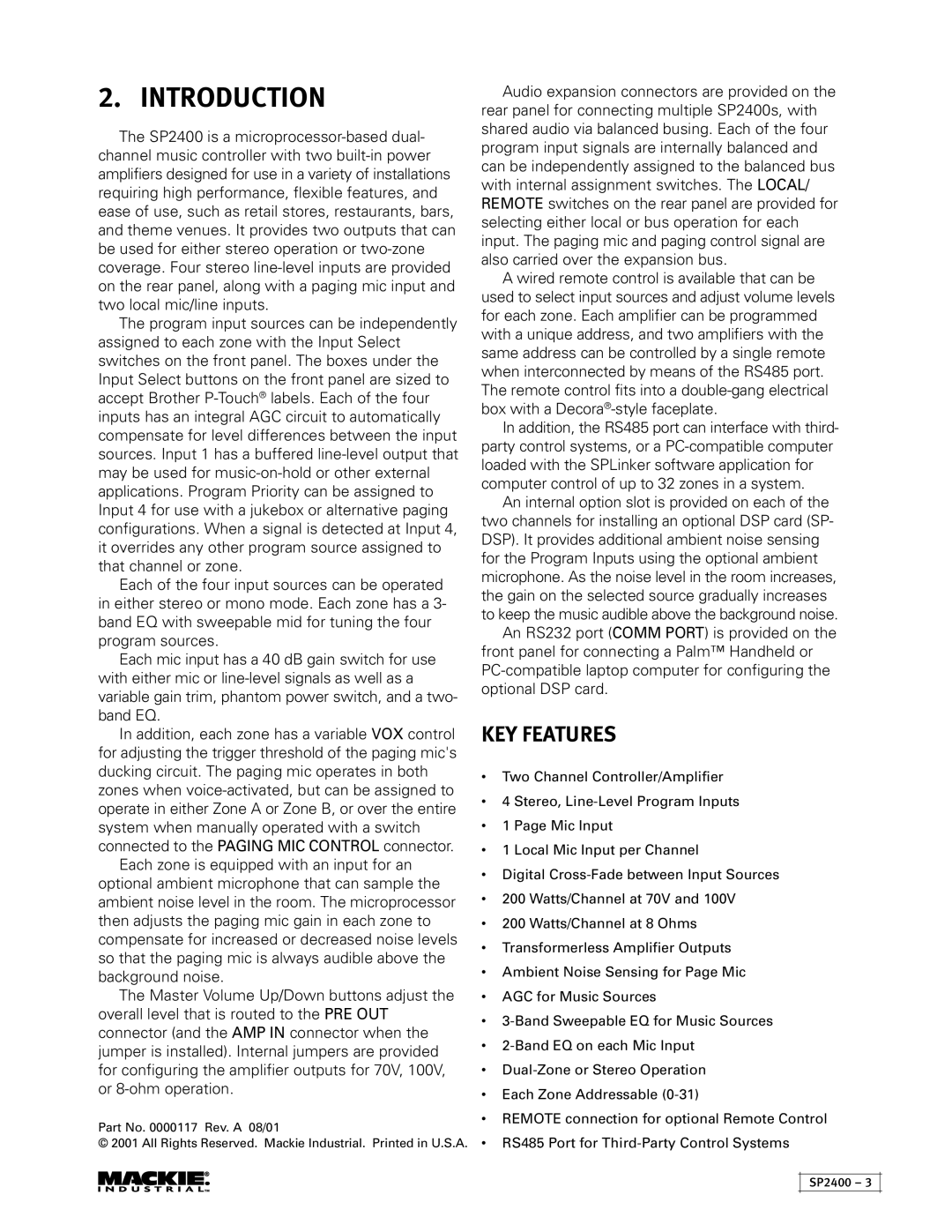2. INTRODUCTION
The SP2400 is a
The program input sources can be independently assigned to each zone with the Input Select switches on the front panel. The boxes under the Input Select buttons on the front panel are sized to accept Brother
Each of the four input sources can be operated in either stereo or mono mode. Each zone has a 3- band EQ with sweepable mid for tuning the four program sources.
Each mic input has a 40 dB gain switch for use with either mic or
In addition, each zone has a variable VOX control for adjusting the trigger threshold of the paging mic's ducking circuit. The paging mic operates in both zones when
Each zone is equipped with an input for an optional ambient microphone that can sample the ambient noise level in the room. The microprocessor then adjusts the paging mic gain in each zone to compensate for increased or decreased noise levels so that the paging mic is always audible above the background noise.
The Master Volume Up/Down buttons adjust the overall level that is routed to the PRE OUT connector (and the AMP IN connector when the jumper is installed). Internal jumpers are provided for configuring the amplifier outputs for 70V, 100V, or
Part No. 0000117 Rev. A 08/01
© 2001 All Rights Reserved. Mackie Industrial. Printed in U.S.A.
Audio expansion connectors are provided on the rear panel for connecting multiple SP2400s, with shared audio via balanced busing. Each of the four program input signals are internally balanced and can be independently assigned to the balanced bus with internal assignment switches. The LOCAL/ REMOTE switches on the rear panel are provided for selecting either local or bus operation for each input. The paging mic and paging control signal are also carried over the expansion bus.
A wired remote control is available that can be
used to select input sources and adjust volume levels for each zone. Each amplifier can be programmed with a unique address, and two amplifiers with the same address can be controlled by a single remote when interconnected by means of the RS485 port. The remote control fits into a
In addition, the RS485 port can interface with third- party control systems, or a
An internal option slot is provided on each of the two channels for installing an optional DSP card (SP- DSP). It provides additional ambient noise sensing for the Program Inputs using the optional ambient microphone. As the noise level in the room increases, the gain on the selected source gradually increases to keep the music audible above the background noise.
An RS232 port (COMM PORT) is provided on the front panel for connecting a Palm™ Handheld or
KEY FEATURES
•Two Channel Controller/Amplifier
•4 Stereo,
•1 Page Mic Input
•1 Local Mic Input per Channel
•Digital
•200 Watts/Channel at 70V and 100V
•200 Watts/Channel at 8 Ohms
•Transformerless Amplifier Outputs
•Ambient Noise Sensing for Page Mic
•AGC for Music Sources
•
•
•
•Each Zone Addressable
•REMOTE connection for optional Remote Control
•RS485 Port for
SP2400 – 3
